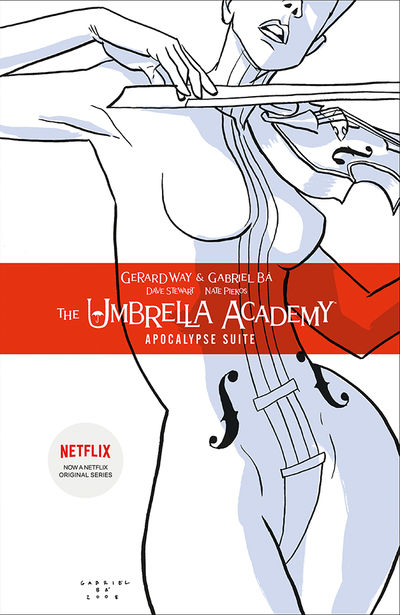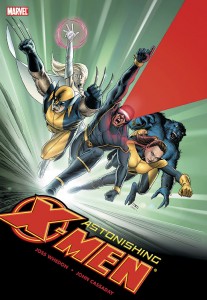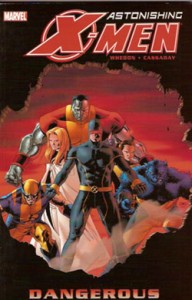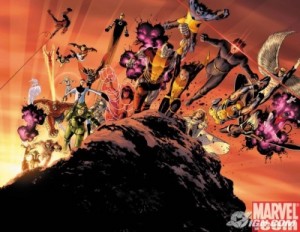 Started reading: ~09/01/01
Started reading: ~09/01/01
Finished reading: 10/26/01
Notes written: 10/26/01
The Amazing Adventures of Kavalier and Clay by Michael Chabon
Warning! Spoilers follow!
The story in The Amazing Adventures of Kavalier and Clay is about two cousins – Sammy Clay and Joe Kavalier – both of whom are Jewish. Sammy was born and raised in NY, Joe in Prague. The book starts off in World War II, and Joe has escaped from a Prague that is about to come under the control of Hitler. He is the only one of his family who escapes. The rest of his family is first interned and then each dies, first his father, then his brother (in an attempt to sail across the Atlantic to freedom) and his mother and grandfather as well. Joe escapes by travelling in a box with the Golem of Prague. He makes his way to NY, where he meets his cousin Sammy.
Sammy is a comic book fan and Joe is an artist, so they create a comic book character, the Escapist. They sell it to Sammy’s boss and it becomes hugely successful. During the time of working on the Escapist, Sammy meets Tracy Bacon, who plays the Escapist on the radio, and Joe meets Rosa Saks. They both fall in love. Sammy eventually develops a relationship with Tracy and they are later busted in a party of several homosexual couples, after which Sammy is forced to service an FBI agent in order to avoid being charged. At the same time, Rosa has become pregnant with Joe’s child. Joe learns that his brother, Tommy, has died on the boat that was supposed to bring him to America and he joins the navy to help fight the Germans, leaving Rosa alone and not telling anyone that he has gone. Sammy wants to avoid a life of being a homosexual, he doesn’t want the stigma. Rosa thinks of having an abortion, but they decide that the best thing is to get married and raise Joe’s child together. They name him Tommy, after Joe’s brother.
Meanwhile, Joe is in Antartica, where he has many travails (his entire company dies, except for one, he nearly goes mad, he finally finds a German base and he and the other man go to kill the lone German there. Joe gets there, after his companion has died, and he accidentally kills the German.) Eventually, Joe is found and he makes it back to NY, but doesn’t reveal himself to his family, not until Tommy sees him once and Joe recognizes him. Joe reveals himself to Tommy and they become friends. Eventually, Tommy gets Joe to reveal himself to the rest of the family, where his feelings for Rosa surface again.
The final main event of the story is Sammy’s testimony before a Senate committee dealing with the delinquent effects of comics on kids. Sammy’s past creations, often boy side-kicks to male heroes, is brought to light, and the inference that he has done so because of his own homosexuality is made. Sammy decides that he is now finally free of his secret, of his life of lies, and he goes to LA.
The book is very complex, with many levels and many investigations of Sammy, Rosa and Joe and their feelings and how they deal with their situations. I don’t think I’ve digested the book on all levels and I’m sure that I would have to reread it several times to get everything in there. There is much about the building of Golems, of superheroes, of escaping from reality. Joe escaped from war, from death, but lost his entire family in the process. Sammy escaped from a life of what he felt would be shame, but had to live a lie in order to do so. Joe then escaped from his second family, ran from them, because he couldn’t bear being with them. Joe both couldn’t give up hope that his first family might return, but couldn’t believe that they would.
The role of comics is central to the story, in that they symbolize the need for escape from reality that most of us have. Sammy’s life was not as bad as Joe’s during the war, but his life before was worse. He didn’t have a father that was there for him, he didn’t have a complete home. He didn’t have the opportunities to learn and to explore that Joe did: music, magic, escapism. He didn’t have the full family life that Joe did. Sammy was also lame, and he needed to escape from his life, more than Joe did. Joe needed to fight back, but Sammy needed to escape, needed to escape almost all aspects of his life, even later on, when he was an adult. He felt he had to escape his natural feelings, his homosexuality, because it was not viewed well by the public. He had to hide everything, and sacraficed his only chance for love to do so.
All of the characters are strong and well developed. I connected with all of them. The book had a little of everything, even a little bit of sex. The story felt like we were growing with these characters, learning with them, there with them as they experienced life. It felt like maybe I was learning something about life as they did. That I experienced things that I would never have experienced myself. Sammy’s homosexuality felt like a natural thing for him. You could tell that he was scared and nervous about exploring this side of himself. He never fully let himself experience it, never fully let himself love Tracy. And, he regretted it forever.
I think that this book will be the kind that I get more out of with each successive rereading. I feel that, right now, I haven’t gotten much more than just the plot and the things that Chabon directly tells us. There is a lot more levels, I think, that I’m not fully digesting, not fully realizing. Chabon does try to tell us directly the main points of his message, by having the characters realize certain things for themselves.
It is interesting that Sammy’s homosexuality is revealed because of his habit of teaming heroes with boy side kicks, but, as he points out, the heroes are playing more of a father role than a corrupting role, much as he is to Tommy. Tommy is his ward, just as Robin is to Batman and so forth. Sammy never felt more than as a father to Tommy, and it is interesting that the same kind of relationship in his comic book characters is what brings his homosexuality to light.
I will definitely have to reread this book and think about it more to try to get more understanding of the book. I really enjoyed this book and highly recommend it.
Like this:
Like Loading...
 Sometimes, stories are interesting just for their weirdness. Not to say that is the only thing I liked about Umbrella Academy, but it is definitely the main thing that attracted me to it.
Sometimes, stories are interesting just for their weirdness. Not to say that is the only thing I liked about Umbrella Academy, but it is definitely the main thing that attracted me to it. 





 Started reading: ~09/01/01
Started reading: ~09/01/01